DMZ Tour (Morning & Afternoon)

|
Imjingak Park
Imjingak tourist sites are the place where the Korean war was broke out on 25 June 1950 and one race has been opposed to each other. There are diverse monuments in this place; a war record monument of Imjingak district, a monument of America's entry into the war, a memorial tower of 17 diplomatic mission died by North Korean's bomb terror in Myanmar in 1983, and a monument for people in Kimpo Airport bomb accident in 1987. Train used to travel to Sinuiju, where is located in the north end of the country, before the partition of the Korean Peninsula. |

|
The Unification Bridge
The Unification Bridge,which is known as the Gateway to the Unification, was constructed by the founder of Hyundai Corp.,Jung Ju Young to drive cattles to North Korea as a payback in 1998. Since1998, It has been used by the former presidents Kim Dae Jung, Roh Mu Hyun to cross the border for North-South summit talks. |
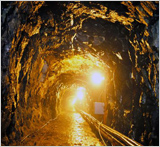
|
The 3rd Infiltration Tunnel
The 3rd Tunnel was discovered on October 17' 1978. It is located 52km from Seoul. Approximately 10'000 soldiers can move through this tunnel In one hour. When this tunnel was discovered' North Koreans insisted steadfastly that it was made by South Koreans to invade North Korea' but this proved to be false. Mt. Dora Observation Platform is located nearby the 3rd Tunnel. From this observation platform' North Korean military personnel are visible' and so are the city of Gaeseong and the Geumgangsan Diamond Mountains. |
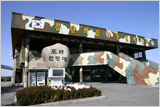
|
Dora Observatory
It is the northernmost observatory of South Korea from which visitors can view a part of North Korean life through a telescope' such as Mt. Songaksan in Gaeseong' Kim Il-seong statue' Gijeong-dong' the outskirts of Gaeseong-si' Train smokestack at Jangdan station' and Geumamgol (collective farm). This has 304 sq. ft. and some facilities; 500 capacity' VIP Room' control office' 30 to 40 capacity parking lot. It opened to the public in Jan. 1987 From Dora Observatory' tourists can view the North Korean propaganda village in the DMZ and as far north as the city of Gaeseong. |
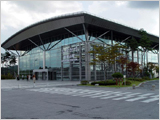
|
Dorasan Station
52 years of anticipation waiting for the day when the two countries will be united once again. Dorasan station the northernmost station in South Korea has planned to connect the Gyongueisun(Line) and it will be linked to the European continent via the Siberian Railway. |
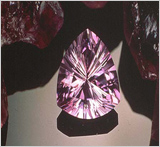
|
Amethyst Center
The colour of Amethyst is as unique as it is seductive, though in fact this gemstone of all gemstones is said to protect its wearer against seduction. Korean Amethyst is extravagance in violet since it has been formed from granite stone base since 5000 years. Moses described it as a symbol of the Spirit of God in the official robes of the High Priest of the Jews, and the Russian Empress Catherine the Great sent thousands of miners into the Urals to look for it. It was said to protect crops against tempests and locusts, bring good fortune in war and in the hunt, drive out evil spirits and inspire the intellect. |
Korean Cultural Experience
| Time |
9:00~12:30 (Meals NOT included) |
Price |
KRW 55,000/Per (Min. 3 Pax) |
| Itinerary |
Hotel  Gwang Jang Traditional Market Gwang Jang Traditional Market  Namsan Hanok Village (Bukchon Hanok Village on Tue) Namsan Hanok Village (Bukchon Hanok Village on Tue)  RedPine or Ginseng Center RedPine or Ginseng Center  Drop off at Hotel Drop off at Hotel |
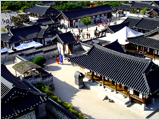
|
Namsan Hanok Village
A folk village located in the middle of the city' more specifically' in the area called Pil-dong' at the foot of the northern part of Namsan. First opened to the public in 1997 after four-years of construction' the village has five authentic old Korean Hanoks that have been transported from other parts of the country and restored to perfection with traditional gardens' pavilions' and ponds. The village is also available for wedding ceremonies' which take place two or three times a week. Visitors can also view and purchase traditional ceramic arts and crafts in the exhibition hall. |
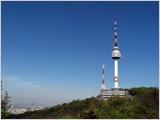
|
N Seoul Tower
'N' from N Seoul Tower stands for New' Namsan and Natural Seoul Tower. Most visitors ride the Namsan cable car up the mountain' and then walk to the tower. The tower features a gift shop and restaurants on the ground floor. Visitors may go up the tower for a fee. There are four observation decks (the 4th observation deck' which is the revolving restaurant' rotates at a rate of one revolution every 48 minutes)' as well as gift shops and two restaurants. It is a popular place to go on clear days to see most of Seoul. |
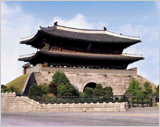
|
Gwang Jang Market
Gwangjang Market is one of Korea's largest traditional markets and is renowned for its quality silk goods, linen bedding and hand-made goods. These days, the vintage clothing arcade in the market has become a very popular attraction among young people and wholesalers searching for unique vintage fashion.
Gwangjang Market has over 100 years of history. The origin of the market can be traced back to the establishment of the Gwangjang Corporation in 1905 which was created with the purpose of reclaiming Korean sovereignty during the period of Japanese occupation. At that time, traditional Korean markets were only temporary marketplaces that were periodically held every few days. Gwangjang Market was the first permanently established market that was open everyday. In 1962 the market was divided into Dongdaemun Market and Gwangjang Market and modern buildings were constructed. |
Korea Folk Village Tour
| Time |
13:00~17:30 (Meals NOT included) |
Price |
KRW 55,000/per (Min. 2 Pax) |
| Itinerary |
Hotel  Korean Folk Village Korean Folk Village  The Korean Traditional Performance (may be canceled on a rainy day) The Korean Traditional Performance (may be canceled on a rainy day)  Amethyst or Ginseng Center Amethyst or Ginseng Center  Hotel Hotel |
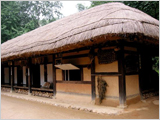
|
Korean Folk Village
The Korean Folk Village which vividly recreates the lifestyle of the Joseon Period is nestled 41 kilometers south of Seoul where clear streams flow through lush forests. The total area of 66,550 square meters embraces a government office a forge a pottery kiln a village school a rice cake shop and a 99-room nobleman's residence. It also contains about 270 farmhouses that feature the characteristics of each region |
Korean Cultural Insight Tour
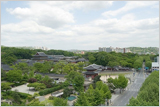
|
Changdeok Palace
Changdeokgung was the second palace after Gyeongbokgung which had been established in 1395 as a primary palace. In the midst of strife for the throne between princes and vassals, authority of Gyeongbokgung was deteriorated. King Jeongjong enthroned by Prince Yi Bang-won moved the capital to Gaegyeong, the one of Goryeo dynasty, again in 1400 on the pretext of superior geographical features of it in fact in order to avert the power struggle. Taejong(Yi bang-won) soon taking over the throne returned to Hanseong(present-day Seoul) had a new palace named Changdeokgung instead of Gyeongbokgung because he had killed his half brothers in Gyeongbokgung whose construction was led by Jeong Do-jeon the king's rival before. Construction of Changdeok Palace began in 1405 and was completed in 1412. King Seonjo expanded the palace grounds by about 500,000 square meters including Huwon (see below). The Palace was burnt to the ground during the Japanese invasion in 1592 and reconstructed in 1609 by King Seonjo and King Gwanghaegun. The next arson was in 1623 because of King Injo Political Revolt against Gwanghaegun. The palace was also attacked by the Manchu Qing but throughout its history of reconstruction and repair has remained faithful to its original design. Changdeokgung was the site of the royal court and the seat of government until 1872 when the neighboring Gyeongbokgung was rebuilt. Korea's last Emperor, Emperor Sunjong lived here until his death in 1926. |
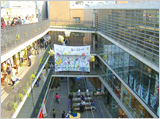
|
Insadong
Insadong has been at the heart of the nation's capital for 600 years and it has been the center of culture since the time of the Joseon Dynasty (1392-1910). Insadong was once known as 'Mary's Alley,' and is a favorite shopping spot among foreigners. Over forty percent of the nation's antique stores are in Insadong. There are a variety of art works from earthenware of the Unified Silla Era to white pottery of the Joseon Era. |

|
Namdaemun Market
Namdaemun Market is a large market in Seoul' South Korea. The market is located next to Namdaemun' which means "Great Southern Gate'" and was the main southern gate to the old city. Namdaemun market is one of the oldest continually running markets in South Korea' and it is the largest retail market in Seoul. Much of the market is outside' but there are also many stores which line the streets. Many retailers buy their items' particularly clothing' at wholesale prices at Namdaemun' to resell in their own stores in other cities. Namdaemun is a popular tourist attraction' but most of the customers are Korean. |
Contact for
English / Chinese / Japanese
